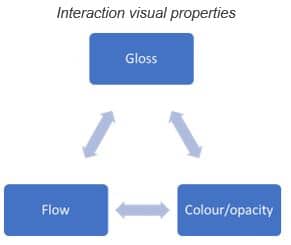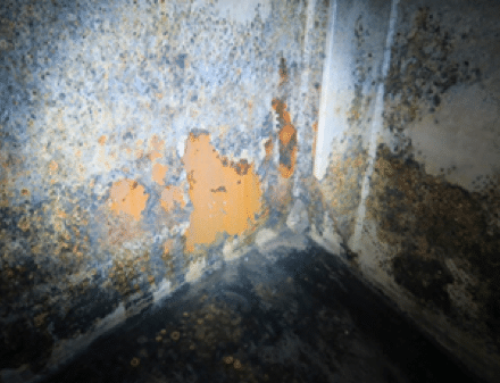The thrills and pitfalls of painting yachts
A yacht is the quintessential luxury product. It has to look good, which means a flawless coat of paint – superb gloss, no orange-peel effect and a solid depth of colour. The paint also needs to be durable: a freshly painted yacht will usually have great gloss, but how long will that last? What is the relationship between opacity and durability, which paint schemes are the suppliers recommending, and how can you be sure of getting the exact gloss, colour and durability you require for your yacht? Colin Mason, Technical Manager at CCS, gives the lowdown.
It was some 45 years ago that Awlgrip’s two-pack polyurethane coating was first applied to a yacht. This product consisted of a base and a curing agent with solvent to enable spray application, which were mixed before use and, once applied, resulted in a product with great gloss, long-lasting colour and perfect hardness. This quickly became the industry standard, replacing the previous one-pack products which cured on reaction with air, forming a much softer and less-resistant surface.
The importance of aesthetics
This technology was not new in the coating market at the time. Its benefits had already been proven on products such as cars, aircraft and other high-value items which call for a combination of visual beauty and high durability (resistance to weathering and scratches).
The jump to yachts was logical given that the visual and durability requirements are similar or even greater. A yacht is a luxury product that must look good. And that means a first-rate coat of paint – fabulous gloss, no orange-peel effect and a robust depth of colour. Owners don’t want to have to get a new coat every year and crews prefer hard and easy-to-clean surfaces.
Striking the right balance
Essentially all paint is made up of a pigment and a resin binder. Solvent is added before use to enable application, and evaporates after use to leave the binder and pigment behind. The pigment provides colour while the resin is responsible for gloss. Too much pigment lowers gloss and produces an orange-peel texture, while too little results in poor opacity. Moreover, higher concentrations of pigment lead to lower durability.
Paint films degrade over time due primarily to ultraviolet (UV) exposure from the sun. The UV wavelengths in sunlight affect resins and pigments in a similar manner to the way they affect human skin, that is, they break down their chemical structure on a molecular level. This yellows most resins and causes them to crack. This effect can be mitigated by finding the right combination of ingredients – however, the individual ingredients in some ways counteract each other, which means their performance can depend as much on their proportions in the mix as their inherent qualities.
Diagram of the relationship between opacity and durability
Increasing pigment content in a paint improves opacity and colour but reduces durability. A higher binder content has the opposite effect, boosting durability and lowering opacity. Low opacity makes it difficult to apply the right amount of paint, often leading to too much or too little. Applying too much paint causes running, while too little makes it difficult to properly coat areas with sharp edges such as doors. This can cause a tender door to appear a different colour than the surrounding hull, for instance.
An even bigger issue is the fact that thin layers are not always UV opaque. With a dark blue paint, for instance, UV rays don’t just affect the topcoat: they may also degrade the underlying epoxy undercoats which are very sensitive to UV light, causing the paint to detach.
The basecoat/clearcoat revolution
The challenge for paint suppliers is that some pigments are actively involved in the reactions which attack the resin catalytically. The higher the proportion of these specific pigments in a paint, the greater the likelihood of damage. Luckily, suppliers can neutralise or minimise this effect by adding so-called UV absorbers and stabilisers. However, just like sun-tan lotions or sunscreens used on human skin, these need to be of sufficient thickness to work effectively and even then are consumed over time.
Luckily, almost as soon as Awlgrip was introducing its two-pack topcoats for yachts, paint suppliers in the automotive market realised that separating the pigment from the resin as much as possible would lessen the speed of resin degradation and extend the positive properties of the film, that is, gloss and colour retention. Car manufacturers started to switch to systems of painting in which a base colour would be applied first and then sealed with a clearcoat, resulting in a complex coating and much improved durability. Today, almost every car, whether its colour is metallic or solid, is painted with a combination of basecoat and clearcoat.
An aggressive environment
Commercial aircraft have also been switching over to these products in the last 10 years or so. At 10,000 metres of altitude, UV radiation is twice as high as at sea level. In addition, exposure to de-icing fluids, cleaning cycles, parking on the ground in what is essentially an industrial environment (aggressive on paint due to heavy concentrations of sulphur and nitrogen oxides, which form acid compounds when wet) and flying for hours through rain and dust (leading to micro-scratches) all require a high degree of resistance.
Yachts also experience an aggressive environment. The basecoat/clearcoat system can therefore offer benefits for them too:
- Highly improved gloss and colour retention
- Lower visibility of scratches: a superficial scratch on a clearcoat that doesn’t reach the underlying basecoat is less visible than a scratch on solid-colour paint
- The clearcoat can be repaired and polished to some degree
The why of gloss
As discussed, when paint dries it forms a resin-rich layer on the surface which provides gloss and hardness. With solid-colour paints, this layer is only a few microns thick. Such paints cannot usually be polished, as the act of polishing effectively removes resin, exposing pigment directly to UV and propagating breakdown. Applying a full layer of clearcoat onto the surface provides a significant additional layer of protection and the possibility to polish (up to a point, of course – the clearcoat can eventually be polished off as well).
Most suppliers currently offer clearcoat options as part of metallic-effect paints. Metallic paints are becoming more and more common in everything from flashy, fast Italian motoryachts to more conventionally styled motor and sailing yachts – there is an 84-metre Feadship that’s painted entirely in metallic colour, for instance. In other words, the clearcoat technology is a well-known concept in the market.
A rich range of products
Akzo Nobel offers its Awlgrip G/H-Line (generally known simply as ‘Awlgrip’) as a clearcoat. This is not recommended for use on white and other light colours, however, as its specific properties cause it to yellow over time due to that pesky UV radiation. Awlcraft 2000 was introduced as a clearcoat option for light colours to remedy this some 20 years ago. This was recently followed up by Awlgrip HDT, which offers much better durability for end users. Both these clearcoats can be used on metallic as well as solid base colours.
Alexseal has in its range a specific basecoat colour option designed to be accompanied by its standard clearcoat. This, too, has been on the market for some 20 years. Among the other major players in the market, Jotun has recently been having success on certain refits with its clearcoat on its gloss topcoat. The Italian brand Boero also has a basecoat/clearcoat option, as does Axalta.
Currently, all suppliers are recommending the following procedures for the different types of paint:
So, as seen there are no significant extra in a paint specification. There would however be a significant extra in a refit schedule that may hope to achieve an acceptable finish in 1 attempt without showcoat.
Dos and don’ts
Most new-build projects would use a showcoat. Against this, is the possibility on superstructures and for hull e.g. waterlines, to be able to apply multiple colours (in the case of most yachts, two would be not uncommon) in the same tent under the first clearcoat. Aircraft regularly receive paint in multiple colours using this work process. Apart from the fact that this can speed up the painting process, it also returns the cut-lines buried under clear which is visually much more appealing.
While it’s possible to apply colour and clearcoat without subsequent sanding and clearcoat, it is currently generally not recommended as the level of texture and dust can be too high. The applicator can perform a heavy polish after a single layer of clearcoat, but this can have implications for the long-term performance of the coating – as mentioned above, lower film thickness reduces UV resistance.
The importance of durability
Regarding repairability, small patch repairs on basecoat/clearcoat systems may be easier to achieve than with solid-colour products. However, the downside is that any overlap at the edge of the repair (where the clearcoats blend) will probably become visible over time. It is, of course, up to owners to decide the economics of whether a patch repair is preferable to a hard cut line.
The major benefit for owners is increased durability, as shown in this graph detailing gloss retention over time (data from supplier).
Gloss retention over time
As can be seen from the graph, using a clearcoat system extends the noticeable gloss time. Assuming the cost of a repaint is one million euros, even one extra year of performance effectively represents a 20% saving on the lifecycle cost of painting if the yacht comes in for a refit after five years.
Gloss is not just a measure of visual appearance: it is also indicative of how easily the surface can be cleaned. Dirt generally sticks to glossy surfaces less than flat ones. Added gloss retention is therefore also of benefit to crews in the sense that the vessel will require less aggressive cleaning less frequently. Of course, all this is over and above the not unimportant but intangible benefits of the vessel just looking better for longer.
About the author
Colin Mason is the Technical Manager of CCS. Colin is university graduated in Applied Chemistry and is NACE I certified. He has 30 years of expertise in yacht coatings project management, quality control of paint teams and training of inexperienced/learner painters. He is experienced in all aspects of superyacht coating i.e. topcoat spraying, filler application, tank coating, interior coating etc. Furthermore, Colin has worked for major superyacht builders around the world.
I must make it clear that I talked generalisations here. Any paint chemist who wishes to take issue can feel free to contact me. I love watching paint dry. After a four-year degree and 15 years working on paint in general – both paint development in the laboratory and work in technical sales – I spent 16 years specifically in yacht painting. I have been involved in painting everything from tenders to J-Class yachts and 100-metre luxury motoryachts.
Read here the Article Making everything clear – by Colin Mason in PDF









